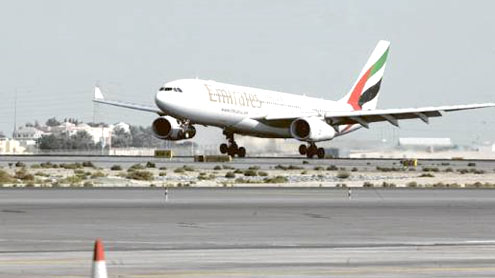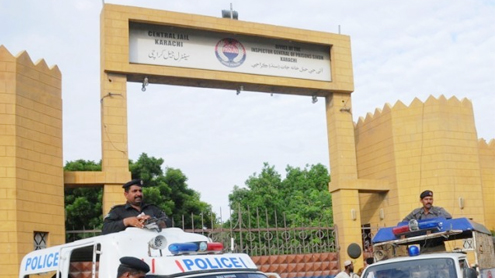 DUBAI: Passenger capacity of the world’s three fastest growing airlines — Emirates, Qatar Airways, and Etihad — is on pace to quadruple to 200 million passengers by 2020, warranting GCC governments to spend a total of $104 billion for airport expansion over the next few years, a latest aviation industry forecast said.
DUBAI: Passenger capacity of the world’s three fastest growing airlines — Emirates, Qatar Airways, and Etihad — is on pace to quadruple to 200 million passengers by 2020, warranting GCC governments to spend a total of $104 billion for airport expansion over the next few years, a latest aviation industry forecast said.
The three legacy carriers, currently growing at phenomenal pace, have grown into global airlines and are instrumental in boosting capacities at their home airports apart from contributing immensely to the region’s economic growth, the Kuwait Financial Centre, or Markaz, said.The “explosive growth” in passenger traffic triggered by these airlines has necessitated the large-scale expansion of existing facilities, the report noted. “By 2015, Dubai, Doha, and Abu Dhabi international airports will have a combined annual capacity of 190 million passengers,” Markaz said in an updated version of its GCC infrastructure series that also covers airports.
“With 48 million passengers in 2010, Dubai is now the world’s fifth largest airport. However, Abu Dhabi and Qatar also aim to attain a hub status for the region,” it noted.To cope with the projected surge in passenger traffic, GCC governments have boosted investment in building new airports and upgrading existing facilities.
“These investments are in the neighbourhood of $104 billion over the coming few years, concentrated primarily in the UAE. The majority of which is for the Al Maktoum Airport with an estimated cost of $50 billion.”The new GCC mega airports will dwarf European airports and support both their airlines and country’s economic development, Markaz said.
Currently, there are 37 main civil airports in the GCC. Of these, more than 30 are in Saudi Arabia and the UAE. Saudi Arabia has four international airports and 22 domestic airports.“The UAE, in particular, has aggressively pursued this model over the last decade and consequently rapidly climbed up in international rankings; with 48 million passengers in 2010, Dubai International is now the world’s fifth largest airport.
However, Abu Dhabi and Qatar also aim to attain a hub status for the region,” Markaz said. Dubai’s new five-runway airport — Al Maktoum International Airport — will be able to handle 70 million passengers. “This is gigantic considering that the population consists of only a few million, including guest workers. The target market is clearly the global citizen. Dubai Airport has doubled in size every few years. Abu Dhabi and Qatar are following suit,” it said.
Passenger traffic in the GCC, which is now a transit point of millions of passengers, has grown at a compounded annual growth rate of 10 per cent between 2002 and 2010 — significantly higher than the global traffic growth in the same period which was between one and three per cent.The report suggests that passenger traffic at Dubai has now overtaken Saudi Arabia, despite the acute financial crisis in Dubai. “This shows that the business of air travel in Dubai is both successful and very resilient.”
Cargo volume at Dubai is now in a league of its own. Dubai handled double the cargo volume of any other GCC airport in 2002. At present, the cargo volume has increased five-fold. In 2010, Dubai alone handled more cargo than all the other GCC airports combined.In its recent forecast, Boeing predicted that Middle Eastern airlines would require 2,340 aircraft by 2029 with a total value of $390 billion as the regional industry expands, Airbus also forecast that by 2028, the Middle East fleet would triple in size.Boeing also estimates that the regional aviation industry will grow at 7.1 per cent a year for the next 20 years. – Khaleejnews












